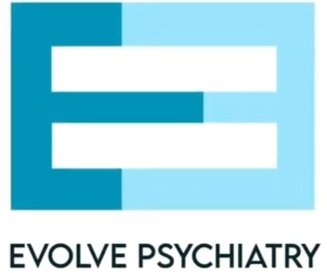Finding Relief With Panic Disorder Therapy
Living with panic disorder can make everyday activities overwhelming and isolating. The sudden and intense surges of fear and anxiety cause significant challenges. Fortunately, panic disorder therapy provides hope, offering a variety of therapeutic options that can give you the relief you need to live a more fulfilling life.
Understanding panic disorder
Panic disorder is an anxiety disorder that causes individuals to have sudden attacks of panic or fear on a regular basis. Anxiety is a natural response to stressful situations, and everyone feels it from time to time. However, those with panic disorder constantly experience anxiety, stress, and panic due to specific situations (triggers), or they can occur seemingly out of nowhere. These panic attacks can be debilitating and significantly impact a person's quality of life.
Symptoms of panic disorder typically beak into two categories: anxiety and panic attacks.
Anxiety
Anxiety is a feeling of unease that can range from mild to severe. It can include feelings of worry, fear, and panic. People who experience anxiety may begin to avoid social situations to prevent these symptoms, causing a cycle of living "in fear of fear." While it is a preservation technique, it can often add to feelings of anxiety and may cause more panic attacks.
Panic attacks
When someone has a panic attack, they experience intense mental and physical symptoms. Panic attacks come on very quickly and often for no logical reason, causing severe stress and fear. Symptoms of a panic attack include:
A racing heartbeat
Feeling faint or lightheaded
A churning stomach or nausea
Dry mouth
Chills
Chest pain
Trembling
Dizziness
Numbness or pins and needles
Tingling in the fingers
Depersonalization or derealization
While panic attacks are very frightening, they are not dangerous and will not cause physical harm. Most panic attacks average between five and 20 minutes; however, some have been reported to last up to an hour. The frequency of attacks will depend on how severe an individual's panic disorder is. For example, some individuals may experience panic attacks once or twice a month, while others may have them several times a week.
Why it is important to seek professional help
Acknowledging the need for help is a crucial first step toward managing one's panic disorder. Many people hesitate to seek professional assistance because they fear judgment or misunderstanding. However, it is essential to recognize that panic disorder is a medical condition, and like any other health concern, it requires—and deserves—professional intervention. In addition, panic disorder symptoms often resemble symptoms of other serious health issues, such as heart attacks, so people experiencing these symptoms should seek an evaluation from a licensed mental health professional.
Types of panic disorder therapy
Panic disorder therapy offers a safe space to explore their thoughts, emotions, and behaviors. Through this treatment, people with panic disorder can develop healthy coping strategies, challenge harmful thought patterns, and gradually face the situations or places they fear.
Cognitive behavioral therapy (CBT)
Cognitive behavioral therapy (CBT) is an evidence-based approach where the individual will discuss their thoughts and emotions with a psychiatrist. This mental health professional can help the individual identify and change negative thought patterns and behaviors that contribute to anxiety. By learning to manage their reactions to anxiety-provoking situations, the individual can gain a sense of control over their symptoms. CBT often involves gradually exposing patients to feared situations, allowing them to confront the source of their anxieties and overcome them. As they go through therapy, they may notice that their panic attacks decrease or ultimately stop.
Exposure therapy
Exposure therapy is a specific form of CBT that psychiatrists often use to treat panic disorder. This technique gradually and systematically exposes patients to the situations or stimuli that trigger their panic attacks. While it may seem daunting initially, the psychiatrist will guide the individual in a controlled environment at a pace they are comfortable with. This allows them to build resilience and confidence in facing their fears. The goal is to reduce their anxious response over time with repeated, controlled exposure.
Panic-focused psychodynamic psychotherapy (PFPP)
Panic-focused psychodynamic psychotherapy (PFPP) addresses the unique challenges of panic disorder through an integrated and specialized form of psychodynamic therapy. PFPP focuses on helping individuals explore unconscious processes and unresolved conflicts often rooted in their early life experiences and relationships that may contribute to panic disorder symptoms. PFPP allows patients to recognize these conflicts and resolve them in a more constructive way. By coming to better terms with specific interpersonal conflicts, harmful fantasies, and avoidant behaviors, individuals may be able to overcome their symptoms of panic disorder.
You are not alone, and help is available
Panic disorder therapy offers effective strategies to manage and overcome this complex disorder's challenges. With the right support, individuals can improve their overall quality of life. If you or someone you love is struggling with panic disorder, you are not alone. Click here to give us a call and schedule an appointment.

